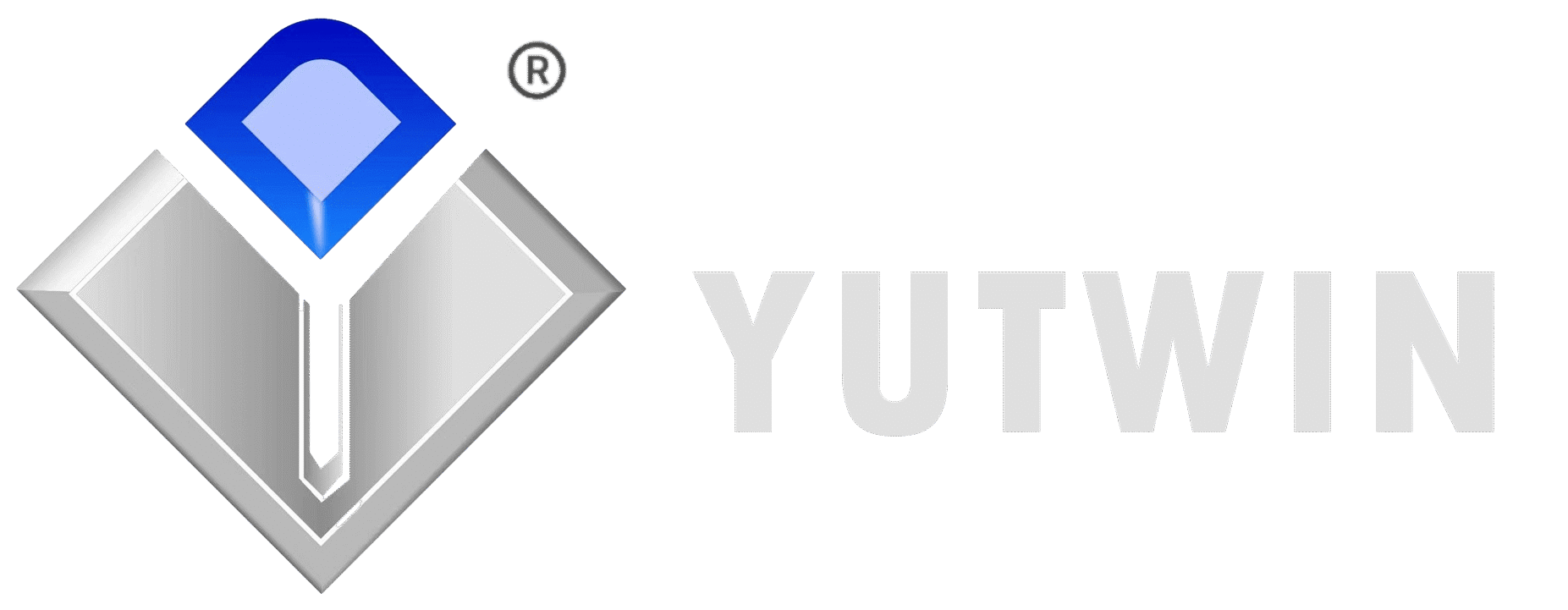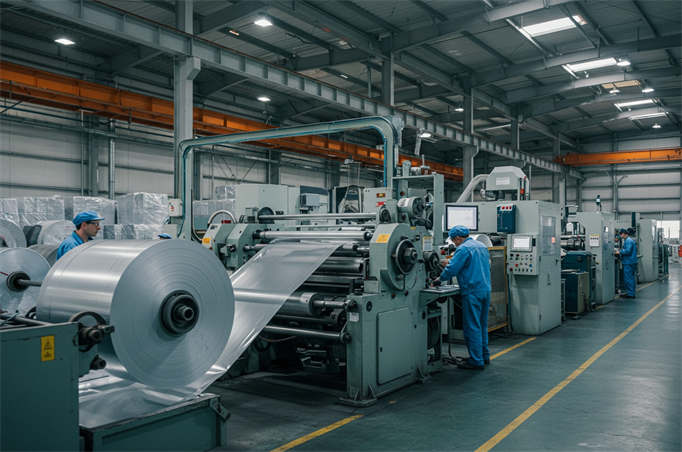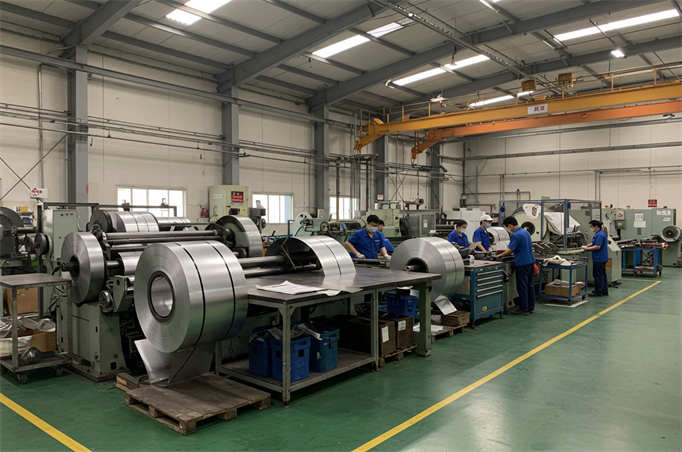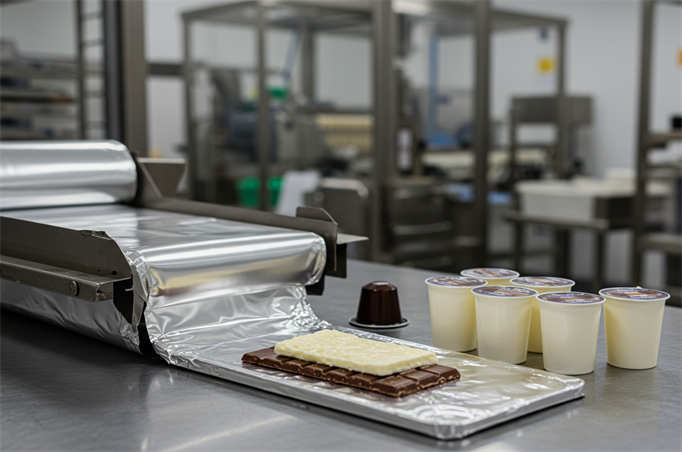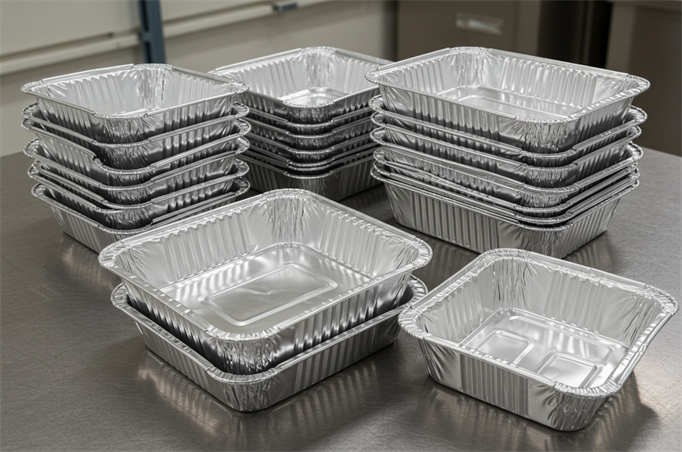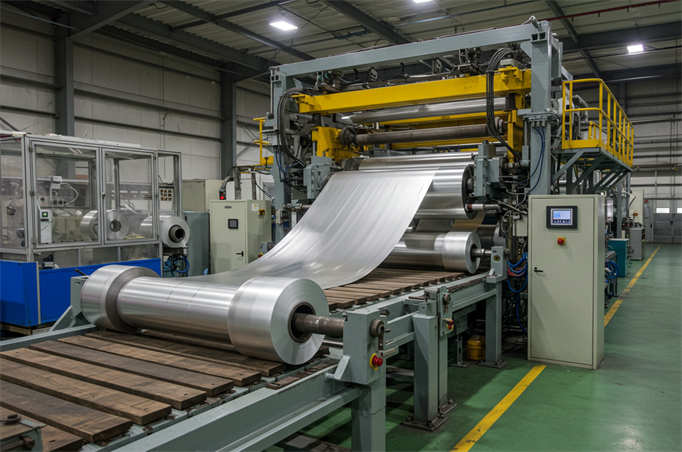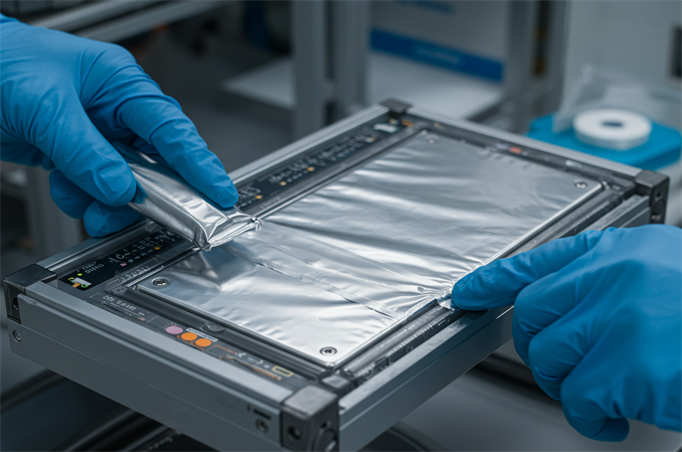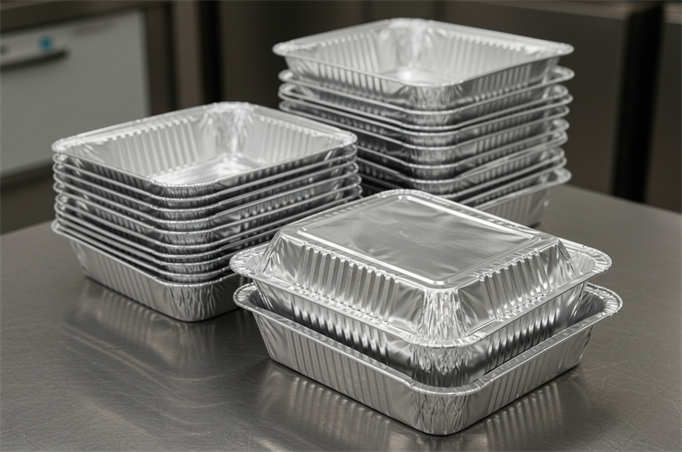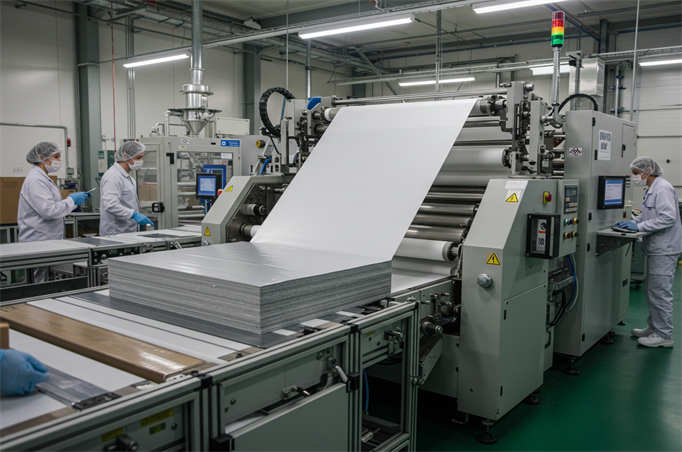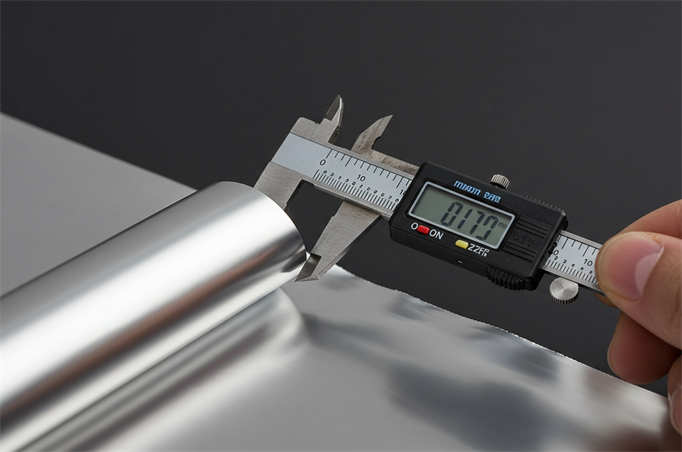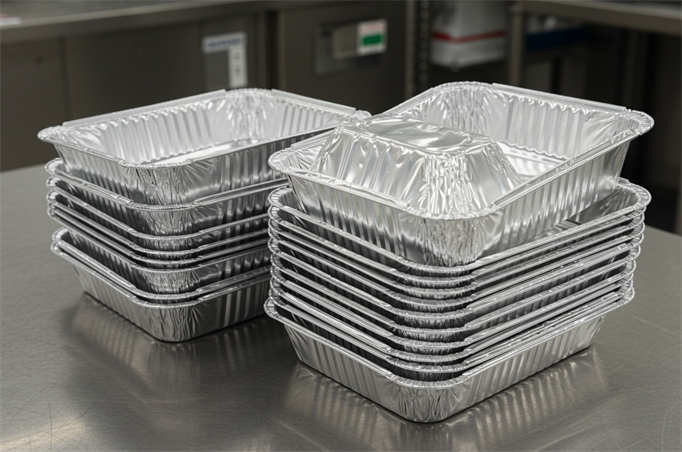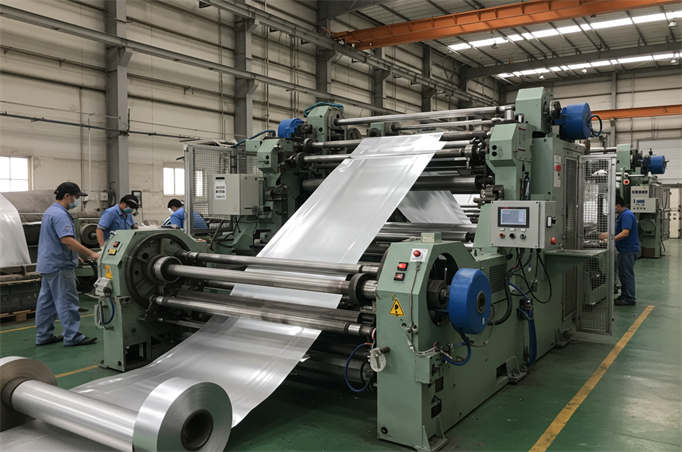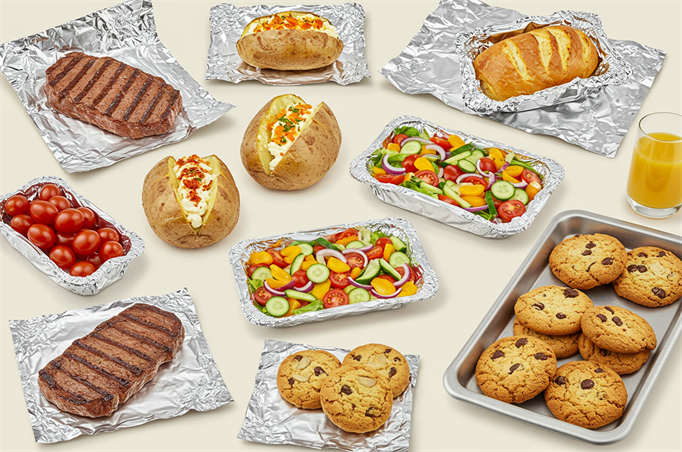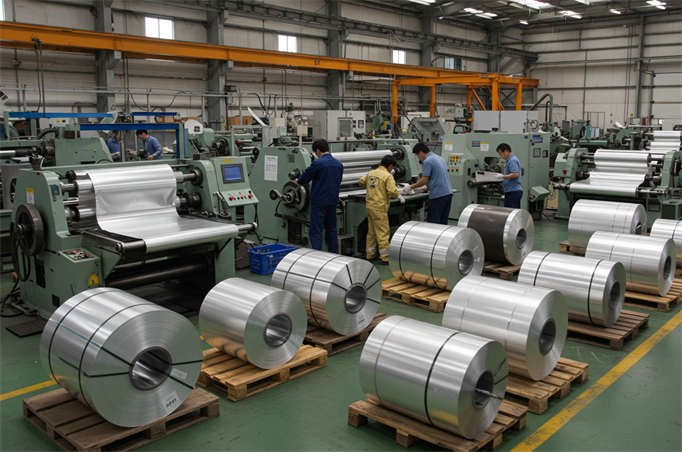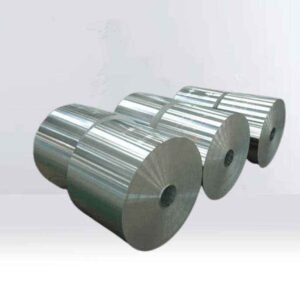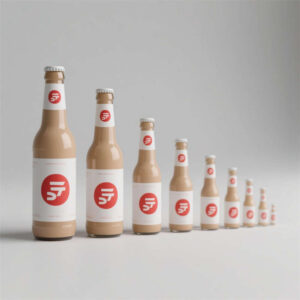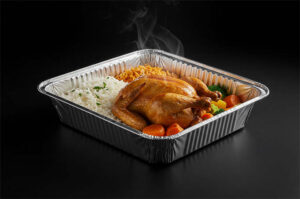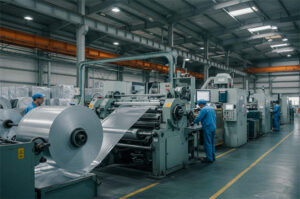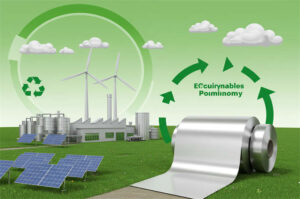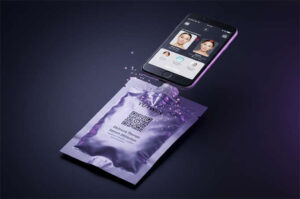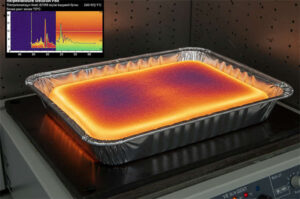If you just Googled “aluminium foil price” and landed here, take a deep breath—you’re in the right kitchen. At Yutwin Aluminium Foil, we talk to importers, wholesalers and food-pack distributors every day, and the first sentence we always hear is: “The aluminium foil price keeps jumping—how do I lock in a fair deal in 2025?” So let’s break it down, as if we’re chatting over coffee, not spreadsheets.
First, the big picture: the aluminium foil price is three numbers added together—(1) the daily LME aluminium ingot price, (2) a fixed “processing fee” that depends on the alloy and how thin you need the foil, and (3) small extras like coating or printing. Today (July 28, 2025), the LME stands at approximately $2,150 per ton, which means the ingot alone accounts for 70% of your final aluminium foil price. Two weeks ago, it dropped 13% in just five trading days—proof that timing matters.
Second, you don’t need to be a metallurgist. For food-service items, you mostly encounter three alloys: 3004 (ideal for deep-draw takeout pans), 3003 (common in everyday lunch boxes), and 8011 (suitable for soft foil applications, such as chocolate or yogurt lids). Thickness? Think “as thin as possible but not thinner.” A 0.06 mm 3004 pan is the sweet spot for most restaurants—it survives ovens yet keeps the aluminium foil price low.
Finally, volume is your best friend. One 20-foot container (approximately 10.5 tons) already reduces the processing fee by $80. Sign an annual 200-ton contract, and you can freeze the aluminium foil price for six months using an “LME M-1 average plus fixed fee” formula—no sleepless nights when the market fluctuates.
Stick around; the rest of this blog turns all the details above into a step-by-step playbook that you can copy and paste into your next supplier email. Let’s keep the aluminium foil price transparent, predictable and—yes—profitable for everyone.
Aluminium foil containers are quickly becoming essential for restaurants, takeout, retail, and the food industry, driven by a global shift towards sustainable, “green” solutions. If you’re an importer, wholesaler, or food packaging distributor, you’ll want to secure competitive wholesale aluminium foil prices, select the right raw materials, and negotiate favourable terms with manufacturers in 2025. Here’s your 4-step guide from Yutwin Aluminium Foil:
1. Unpack the Price Structure: Aluminium Ingot Price + Processing Fee + Surcharges
When you look at an aluminium foil quote, here’s what makes up the wholesale aluminium foil price:
- Aluminium Ingot Price (LME): This fluctuates daily and accounts for over 70% of the quote. For example, in late July 2025, LME aluminium prices hovered around $2,150/ton, after a sharp 13% drop within two weeks.
- Processing Fees: These vary based on alloy, thickness, and coating/printing requirements:
- 3003/3004 Container Foil (0.04–0.08 mm): Chinese factories typically charge $1,000–$1,200/ton (FOB Ningbo/Shanghai). European factories quote higher, at $1,350–$1,500/ton.
- 8011 Household Foil (0.009–0.025 mm): Processing fees range from $1,400–$1,600/ton.
- Surcharges: These “add-on costs” typically range from $50–$120/ton and cover items like:
- Core, pallets, and PE bags.
- Coating or colour printing.
- One-time mould fees usually cost $500–$1,000 per set.
2. Choose the Right Material: 3004, 3003, or 8011?
Selecting the correct alloy directly impacts performance and the price of aluminium foil.
- 3004 Alloy: We recommend this alloy for deep-drawn takeout containers and airline meal trays because it contains 1.0–1.5% Manganese, giving it 15% higher strength than 3003. It’s also corrosion-resistant, recyclable, and often specified for European and American orders.
- 3003 Alloy: A traditional container foil, 3003 costs slightly less and is well-suited for takeout boxes and egg tart moulds that don’t require high strength.
- 8011 Alloy: This is a soft temper foil, commonly used for wrapping household items and making chocolate trays. It is not suitable for deep drawing.
Thickness Ranges:
- Meal Containers: 0.04–0.09 mm
- Household/Food Wrap: 0.009–0.025 mm
- Lids: 0.03–0.05 mm
3. Secure Your Supplier: The “Three Checks” to Avoid Pitfalls
We advise you always to perform these checks to ensure you partner with a reliable supplier and get a consistent aluminium foil price:
- Check Production Capacity: China’s aluminium foil output exceeded 5 million tons in 2024, with Shandong, Henan, Jiangsu, and Inner Mongolia provinces accounting for approximately 60% of that total. We recommend prioritising factories with an annual capacity of ≥80,000 tons y certifications from FDA, BRC, or ISO 22000.
- Check Lead Time: For a standard 20 GP container (10–12 tons):
- Chinese factories typically offer 15–20 days.
- European factories usually take 6–8 weeks, but may provide shorter local delivery times.
- Check Compliance: For exports to Europe and the US, your products must comply with FDA 21 CFR §175.300 y EU 10/2011. German LFGB and French DGCCRF tests require an additional 7–10 days.
4. Negotiation Tactics: Lock in “Aluminium Ingot Price + Fixed Processing Fee” Long-Term Contracts
Negotiating effectively can significantly reduce your overall aluminum foil price.
- Lock in Aluminium Ingot Prices: Sign 3- to 6-month contracts based on the M-1 or M-2 average price (where M represents the shipping month). Este helps you avoid sharp price increases.
- Processing Fee Tiers: For annual purchases of 500 tons or more, you can request a processing fee reduction of $50–$80/ton. For ≥1,000 tons, an additional $30–$50/ton reduction is often possible.
- Free Moulds: For single orders of 2 containers or more (approximately 20 tons), factories may waive mould fees or offer a rebate.
- Payment Terms: Consider a 90-day Letter of Credit (LC) or a 60-day Open Account (OA), which typically requires a 10% deposit. Chinese factories widely accept a 30/70 TT (Telegraphic Transfer) payment structure.
- “Green” Bonus: If you can provide proof of over 70% recycled aluminium content, European buyers may pay an extra €30–€50/ton. You can leverage this to request that the factory cover certification costs during negotiations.
Quick Quote Example (July 28, 2025):
- 3004 Container Foil, 0.06 mm, 600 mm width:
- LME Aluminium Price: $2,150/ton
- Processing Fee: $1,100/ton
- Surcharges: $80/ton
- Total FOB Qingdao: $3,330/ton
- A 20 GP container holds approximately 10.5 tons net weight, making the total cost about $34,965 per container, or roughly $0.32 per 600 mL takeout box.
Conclusion: To secure a stable and profitable supply of aluminium foil containers, first, negotiate the aluminium ingot price and processing fees separately. Then, select 3004 alloy from factories with an annual capacity of 80,000 tons or more and hold FDA/BRC certifications. Finally, use an “annual framework + tiered volume” approach to lock in long-term low prices. Este is the fastest way for importers to achieve their goals.
What are the Latest Trends in Food Service Aluminum Foil Packaging?
In 2025, food service aluminum foil packaging is defined by four key trends: “thinner, greener, smarter, and more application-specific.” These seven trends are rapidly gaining momentum globally, presenting new product and sourcing opportunities for importers, restaurant chains, and e-commerce platforms.
- Ultra-Thin Specifications Become Standard for “Reduction”: We’re witnessing a shift in thickness from 0.04 mm to 0.035 mm and even 0.025 mm in takeout containers, airline meal trays, and baking trays. Este reduces aluminium consumption per unit by 8–12%, directly offsetting the projected 12% year-over-year increase in aluminium foil prices in 2025.
- High-Temperature Sterilisation Sterilisation Trays for Pre-made Meals and Cold Chains: Deep-drawn aluminium foil trays (3004-H24) that withstand 121°C counter-pressure steam sterilisation are becoming the standard for pre-made meals and fresh produce e-commerce. Paired with modified atmosphere or skin packaging, they extend shelf life by 30–50% compared to PP trays.
- Antibacterial/Antioxidant Functional Coatings are Widely Adopted: Nano-coated aluminium foil bags now achieve oxygen transmission rates as low as 0.5 cm³/m²·24 h, commanding a 25–30% premium for high-end products. Household fresh-keeping foil now features titanium-based antibacterial layers, achieving a 99.9% antibacterial rate and extending food freshness by up to 10 days.
- 100% Recyclable Design + Recycled Aluminium Content Claims: Companies like Hindalco and Eurofoil have launched food foil series with a recycled aluminium content of> 70%, promising compatibility with existing community recycling systems and zero harmful gas emissions during incineration. European buyers are willing to pay an extra €30–€50/ton for this.
- Smart Packaging Integration with Traceability Codes: Aluminium lids and bags now feature integrated QR codes or RFID tags for “one box, one code” traceability. Este helps restaurant chains track cold chain temperatures and monitor inventory batches, resulting in a 15% reduction in food waste.
- Explosion of Application-Specific New Categories:
- Aluminium cups are replacing single-use plastic cups and are now available in retail channels like Walmart and Sam’s Club.
- Takeout insulated bags now combine aluminium foil with bio-based films, reducing weight by 20% and becoming compostable.
- Vacuum aluminium foil bags for rice and grains offer 12-month room-temperature freshness, replacing traditional woven bags.
- Policy and Carbon Emissions Accounting Drive “De-plasticization”: The EU PPWR and US NERC have listed single-use plastic meal boxes as high-tax items. Life Cycle Assessments (LCA) show that aluminium trays can offset their primary aluminium carbon emissions after just seven cycles, far lower than the 30+ cycles needed for plastic.
Purchasing Tips:
- For the second half of 2025, LME aluminium prices are expected to fluctuate between $2,000 and $2,300/ton. We suggest signing 3- to 6-month long-term contracts based on “LME M-1 average price + fixed processing fee” to manage your aluminum foil price.
- Third-party certifications (ASI-PS, GRS) are required for claims of recycled aluminium content. Secure your certificates early to avoid queues during peak seasons.
- Please pay attention to 0.025 mm food-grade 3004-H24 deep-drawn foil, as it faces a high risk of shortages in the next 12 months. Consider pre-ordering to avoid potential shortages.
Key Factors Influencing Aluminio Foil Wholesale Prices
In July 2025, four main categories and 12 core variables influence wholesale aluminio foil prices: upstream, midstream, downstream, and external factors. As an importer or wholesaler, keeping an eye on these indicators will give you an advantage in negotiations and price locking.
1. Upstream: Raw Materials and Energy
- LME Aluminio Ingot Price (Weight ≈ 55%): For every $100/ton fluctuation in the London Metal Exchange spot price, aluminum foil factory FOB quotes fluctuate by $60–$70/ton.
- Alloy Surcharge: 3004 deep-drawn material costs $20–$30/ton more than 3003. 8011 household foil, due to its higher Fe and Si content, has processing fees about $40/ton higher.
- Energy and Carbon Costs: In 2025, the EU CBAM (Carbon Border Adjustment Mechanism) enters its actual payment phase. Aluminium foil exported to the EU will incur an additional carbon tariff of approximately €50–€70/ton, impacting the overall price of aluminium foil.
- Recycled Aluminium Proportion: Products with a content of≥70% recycled aluminium can command a premium of $30–$50/ton but require GRS/ASI-PS certification. Certification queues can be 8–12 weeks long.
2. Midstream: Manufacturing Variables
- Processing Fees (Weight ≈ 25%): Mainstream 0.04–0.08 mm food-grade foil processing fees in China range from $1,000 to $1,200/ton. European factories charge $1,350–$1,500/ton.
- Process Upgrades: Ultra-thin 0.025 mm foil has a yield of only 65%, 20 percentage points lower than 0.06 mm, leading to higher unit costs.
- Environmental Investment: The annual amortisation costs for wastewater zero-discharge and VOC treatment are approximately $30–$50/ton.
- Capacity Utilisation Rate: When industry operating rates exceed 85%, processing fees can increase by $30 to $50 per month. They decrease when rates fall below 70%.
3. Downstream: Demand and Channels
- Food Packaging Demand (Weight ≈ 15%): Peak seasons for pre-made meals and takeout (Q3–Q4) drive a 3–5% price increase.
- Order Volume Tiers: Annual contracts of 500 tons or more can secure discounts of $50–$80/ton. ≥1,000 tons can result in an additional $30–$50 reduction in costs.
- Regional Price Differences: FOB quotes from the Yangtze River Delta are 8–12% lower than those from central and western regions; however, shipping costs and lead times must be factored in.
4. External: Policy and Macro Factors
- Tariffs and Exchange Rates: In July 2025, the RMB against the USD fluctuated between 7.25 and 7.30. A 2% depreciation of the RMB translates to a $15–$20/ton increase in the price of imported papel de aluminio. If the US reinstates Section 301 additional tariffs, it will add an extra 7.5% to the cost.
Practical Advice:
- Establish “LME aluminium price + fixed processing fee” quarterly long-term contracts to lock in 55% of the price fluctuation risk.
- Obtain recycled aluminium content certifications in advance and arrange production two months before peak season.
- Lock in volume during the Q2 off-season and execute in the Q3 peak season to capture a 3–5% seasonal price difference.
Aluminum Alloys: Yutwin Aluminum Foil: Typical Uses
We use three main aluminum alloy grades for food-grade aluminum foil manufacturing, listed by their frequency of use and order volume:
8011 (8xxx series, Al-Fe-Si)
- This alloy accounts for over 60% of global food foil production. We can produce it in thicknesses from 0.006 to 0.2 mm.
- Tempers: O (soft), H18, H22, H24.
- Typical uses include household foil, yogurt lids, pharmaceutical foil, wine labels, composite bags, and takeout container lids.
3003 / 3004 (3xxx series, Al-Mn)
- 3003: This is our standard container foil, offering moderate stamping depth, good corrosion resistance, and lower cost.
- 3004: This alloy provides 15% higher deep-drawing performance than 3003. It’s our top choice for airline meal trays and pre-made meal trays.
- Tempers: H24, H22.
- Grosor: 0.04–0.20 mm.
1235 / 1070 (1xxx series, ≥99% Al)
- These alloys offer extremely high ductility and are available in thicknesses ranging from 0.0045 to 0.035 mm.
- Main Uses: Cable foil, capacitor foil, and lithium battery current collectors, as well as other light-duty packaging.
Auxiliary Alloys
- 8021: Higher Si content than 8011, used for pharmaceutical cold-form aluminum (Alu-Alu) base foil.
- 3102: Air conditioner heat exchanger fin foil.
- 5052: High-strength lunch boxes and easy-open cans (used in small quantities).
How to Choose Aluminum Foil Thickness
Choosing the right aluminium foil thickness isn’t about “the thicker, the better”; it’s about “just enough.” When selecting thickness, first determine the application, then check the oxygen/moisture transmission indicators, as well as mechanical strength, to narrow down the range quickly. Here’s a quick reference table showing common scenarios, optimal thicknesses, and performance characteristics:
| Application Scenario | Recommended Thickness Range | Key Reason |
| Chocolate, Candy Inner Packaging | 7–12 µm (0.007–0.012 mm) | This ultra-thin foil effectively blocks light and oxygen, reducing costs by over 30%. |
| Household Cling Film, Takeaway Lids | 9–15 µm (0.009–0.015 mm) | It has a moisture vapor transmission rate of less than 2.5 g/(m2⋅24h), ideal for short-term preservation. |
| Coffee, Tea, Dried Fruit Stand-up Pouches | 20–30 µm (0.020–0.030 mm) | We use this for higher moisture resistance and puncture resistance; it can be laminated with PET/PE. |
| Yogurt Cup Lids, Pudding Seals | 30–38 µm (0.030–0.038 mm) | This thickness balances strong heat-sealing properties with easy peelability. |
| Airline/Takeaway Aluminum Foil Meal Boxes | 0.04–0.09 mm | It allows for deep drawing without cracking and resists heat up to ≥250∘do. |
| Pre-cooked Meal High-Temperature Sterilization Trays | 0.08–0.15 mm | It withstands 121∘do steam sterilization without deformation and offers high mechanical strength. |
| Industrial Shielding, Cable Wrapping | 0.04–0.20 mm | This range provides electromagnetic interference shielding while accommodating thermal expansion. |
“Three-Step Method” Practical Guide:
- Define the Scenario: Are you packaging chocolates or making meal containers?
- Check Barrier Properties: Moisture and oxygen permeability decrease exponentially with thickness. For oxygen-sensitive products, select a filter with a pore size of at least 20 µm.
- Calculate the Economics: Every 1 µm reduction in thickness saves approximately $5–$ 7 per ton in cost. However, excessively thin foil can lead to pinholes, increasing the scrap rate.
Pro-Tip:
- Food-grade aluminium foil thickness tolerance: ±5% (for roll batches ≤3 tons). For larger orders, you can negotiate a margin of up to ±3%.
- For ultra-thin foil (<12 µm), always demand “pinholes ≤200 per m²” to ensure barrier performance isn’t compromised.
By using the table above, you can confidently select the correct thickness to balance cost, performance, and compliance.
How Thick Does Aluminum Foil Need to Be for Meal Containers?
At Yutwin Aluminium Foil, we commonly use aluminium foil meal containers with a thickness range of 0.03 mm – 0.20 mm (30–200 µm).
- North American Government Procurement Specifications: We often see requests for 0.0035″–0.0040″, which is approximately 0.09–0.10 mm, typically for large-capacity airline or takeout trays.
- Mainstream Domestic Takeout/Baking Boxes: The 0.04 mm – 0.09 mm range accounts for the largest proportion, striking a balance between strength and cost.
How to Quickly Select the Right Thickness:
- Light takeout, small cake boxes: 0.04–0.06 mm
- Airline meals, Chinese dishes with soup: 0.07–0.09 mm (less prone to deformation)
- Reusable, heatable deep dishes: 0.10–0.15 mm, suitable for pre-made meal sterilisation trays.
Thickness tolerance is generally ±5%. For bulk orders of 10 tons or more, you can request a tolerance of ±3%.
Aluminum Foil Thickness and Weight
At Yutwin Aluminum Foil, we use a simple formula to calculate the relationship between aluminum foil thickness (T, in mm) and unit area weight (g/m²):
Unit Area Weight = Thickness × Density × 1,000
=T(mm)×2.7(g/cm3)×1,000
=T(mm)×2,700(g/m2)
Conversely, if you know the weight, you can calculate the thickness:
T(mm) = Weight(g/m²) ÷ 2,700
Quick Reference Table (Density 2.7 g/cm³)
| Thickness (µm) | Thickness (mm) | Theoretical Unit Weight (g/m²) |
| 6 | 0.006 | 16.2 |
| 7 | 0.007 | 18.9 |
| 9 | 0.009 | 24.3 |
| 12 | 0.012 | 32.4 |
| 20 | 0.020 | 54.0 |
| 30 | 0.030 | 81.0 |
| 40 | 0.040 | 108.0 |
| 50 | 0.050 | 135.0 |
| 100 | 0.100 | 270.0 |
Ejemplo: A roll of 0.04 mm (40 μm) thick aluminum foil theoretically weighs 108 g per square meter. If the roll is 300 mm wide and 100 m long, the entire roll would weigh approximately:
0.3 m × 100 m × 108 g/m² = 3.24 kg
How Does Aluminum Foil Thickness Relate to Price?
At Yutwin Aluminium Foil, we observe that the relationship between aluminium foil thickness and aluminium foil price is not a simple linear “thicker means more expensive” one. Instead, it follows a “two-stage” pattern:
Increasing Thickness: Price Rises Linearly with Aluminio Consumption. The formula is straightforward: Unit Price ($/kg) ≈ = LME Aluminium Price + Fixed Processing Fee. Every 10 µm increase in thickness adds 27 g/m² to the unit area weight, directly increasing material costs. For example:
- 0.01–0.02 mm (10–20 µm) household foil: This generally falls into a lower price range.
- 0.03–0.05 mm (30–50 µm) food container foil: This typically falls into a mid-range price.
Decreasing Thickness: The price can be higher when the thickness is ≤12 µm (referred to as “double-zero foil”). Rolling difficulty increases, pinhole control becomes more critical, and yield rates decrease. Este can lead to a processing fee premium of $300–$600/ton, making thinner foil more expensive. For instance:
- 6 µm battery foil processing fees are approximately $2,000/ton, significantly higher than the $1,100/ton for 40 µm container foil.
Critical Point: For food packaging, the most economical thickness range is 0.03–0.09 mm. Any thinner or thicker than this range will drive up unit costs due to either “ultra-thin technology premium” or “material redundancy.”
Conclusion: When purchasing, first target the most economical thickness range (30–90 µm), then fine-tune based on barrier or strength requirements to balance performance and cost effectively. This strategic approach helps manage your overall aluminium foil price.
How to Buy Cost-Effective Aluminium Foil
At Yutwin Aluminium Foil, the cost-effectiveness of aluminium foil is determined by six key factors: application, alloy, thickness, certification, purchase volume, and supply chain. Complete these four steps, and you’ll likely avoid overpaying or choosing the wrong product.
1. First, Lock in the “Application-Thickness-Alloy” Combination.
| Escenario | Espesor | Aleación | Reason |
| Household Cling Film/Lids | 9–15 µm | 8011-O | It’s thin enough, cost-effective, and easy to tear. |
| Takeaway Meal Containers | 0.04–0.09 mm | 3004-H24 | This alloy allows for deep drawing without cracking and is recyclable. |
| Pre-cooked Meal High-Temperature Trays | 0.08–0.15 mm | 3003-H22 | It maintains its shape during 121 °C steam sterilization. |
| Industrial Shielding/Cables | 0.03–0.20 mm | 1235-H18 | We choose this for its high ductility and low cost. |
2. Next, Check Three Certificates to Avoid Low-Quality Products.
At Yutwin Aluminium Foil, we consistently ensure that our products meet the highest standards. You should confirm your supplier has these essential certifications to guarantee food safety and quality:
- Food Grade: FDA 21 CFR §175.300 or EU 10/2011
- Recycled Aluminium: GRS/ASI-PS (a plus for EU exports)
- Factory System: ISO 22000 / BRC (mandatory for restaurant chains)
3. Compare Prices Using “Per-Ton Price” Instead of “Per-Roll Price.”
As of July 28, 2025, here are our reference prices from the main Chinese ports:
- 8011-O 12 µm: Approximately $3,350/ton (FOB Shanghai)
- 3004-H24 0.06 mm: Approximately $3,300/ton (FOB Qingdao)
Convert the thickness, width, and length into kilograms, then multiply by the per-ton price. Este will instantly give you the cost per square meter, helping you compare the actual aluminium foil price.
4. Lock in Suppliers with Two Key Criteria.
- Capacity ≥ 80,000 tons/year: This allows you to secure long-term contracts based on the “LME M-1 aluminum price + fixed processing fees,” which can be 3–5% cheaper than spot prices.
- Minimum Order Quantity (MOQ):
- For household foil, orders of 5 tons or more may be eligible for mould fee reductions.
- For meal container material, orders of 20 tons (equivalent to one container) or more qualify for free flanging at the edges.
30-Second Practical Checklist: “First, ask about thickness and alloy, then check the three certifications, convert to per-ton pricing, target 80,000-ton factories, and order ≥20 tons.” Following this process can typically lower your total cost by 10–15% while ensuring food safety and timely delivery.
Aluminium Foil Order Quantities and Bulk Discounts
At Yutwin Aluminium Foil, we offer a tiered discount structure for aluminium foil orders, effective July 2025.
Industry Standard Tiers
Most manufacturers divide discounts into four levels:
- Small Batch (<1 ton): No discount, highest unit price, fastest lead time (7–10 days).
- Medium Batch (1–5 tons): Processing fees reduced by $30–$50/ton, or mould fees rebated.
- Large Batch (5–20 tons): The overall aluminium foil price (ingot price + processing fee) decreases by an additional 1%–2%, with a lead time of 15–20 days.
- Annual Frame Contract (≥20 tons/month or ≥200 tons/year): You can lock in “LME M-1 + Fixed Processing Fee” for 6 months, and processing fees decrease by an additional $50–$80/ton.
Example for Spot Platforms / E-commerce Small Orders
MISUMI China’s aluminum foil self-sealing bag discount table: (Please note: The provided text did not include a specific table for MISUMI. I’m providing a placeholder that you can replace with actual data if available.)
Emerging Markets (Algeria, Malaysia)
Importers can typically receive a 3%–5% CIF discount for single orders of 5 tons or more. For orders of 20 tons or more, an additional 2% reduction in customs agent fees is often possible.
How to Negotiate Further Discounts
- Combine Multiple Thicknesses/Specifications: Sign contracts for two different thickness specifications (e.g., 0.04 mm and 0.06 mm) and calculate the total volume for pricing purposes.
- Opt for Recycled Content: Choosing products with 70% recycled aluminium content can earn you a “green premium” of €30–€50/ton from European buyers.
- Lock LME Prices Early: Locking in LME prices 45 days in advance can save an additional 1%–1.5% by mitigating the risk of aluminium price volatility.
Conclusion: By structuring your annual demand into long-term contracts of ≥20 tons/month o ≥200 tons/year, you can secure the highest industry discounts. The aluminum ingot portion of the aluminum foil price can be locked for 6 months, and processing fees will be $80–$120/ton lower than for small orders, translating to an overall 3%–4% reduction in per-ton cost.
How to Optimise Aluminium Foil Orders to Lower Costs
At Yutwin Aluminum Foil, minimising aluminium foil order costs involves optimising materials, processes, supply chain, and digital management. Here’s an 8-step actionable checklist incorporating the latest industry practices from July 2025.
1. First, Lock in the Most Economical Specifications Based on “Application-Thickness-Alloy.”
- Takeout Meal Containers: We recommend 0.06 mm 3004-H24 (FOB $3,300/ton as of July 2025).
- Household Fresh-Keeping Film: We recommend 12 µm 8011-O (FOB $3,350/ton as of July 2025).
Every 10 µm reduction in thickness can lower the per-ton price by 1.5%. However, beware of the “ultra-thin trap”: thicknesses below 12 µm can result in increased processing fees of $300/ton.
2. Use Recycled Aluminum and Lightweight Design to Save an Additional 5–7%.
- 70% recycled aluminum content + GRS/ASI-PS certificate: European customers are willing to pay a premium of €30–€50/ton. You can leverage this to negotiate with the factory to cover certification costs.
- Lightweighting: For example, switching from 30 µm to 12 µm can reduce the comprehensive cost per unit by 18% and carbon emissions by 22%.
3. Consolidate Orders and Sign Long-Term Contracts to Reduce Per-Ton Price by Another 3–5%.
- Tiered Discounts: Orders of 20 tons or more per Batch can receive a direct reduction of $80/ton in processing fees. Annual contracts of ≥200 tons allow you to lock in “LME M-1 + Fixed Processing Fee” for 6 months.
- Combine Multiple Specifications: Combine different thicknesses, such as 0.04 mm and 0.06 mm, into a single container to receive a volume discount on the total quantity.
4. Implement Digital Order Management to Cut Inventory and Errors.
- ERP + MRP (Enterprise Resource Planning + Material Requirements Planning): Introduce these systems to reduce safety stock from 30 days to 10 days, cutting capital tied up by 2–3%.
- Automated Scheduling Algorithms: Reduce roll changes from 8 times/day to 3 times/day, decreasing scrap rolls by 1.2%.
5. Optimise the Production Process: Lean, Energy-Efficient, and Automated.
- Coating Speed: Increase coating speed by 15%, resulting in an 8% reduction in energy consumption. Using infrared drying instead of traditional hot air saves an additional $ 0.03 per square meter in electricity costs.
- Online Defect Detection + SPC Six Sigma: Reduce the scrap rate from 3% to 0.8%.
6. Implement Supply Chain Dual Backup to Hedge Against Tariff/Exchange Rate Fluctuations.
- Dual Origin Quotes: Obtain quotes from major Chinese ports and secondary Southeast Asian ports, which can reveal a price difference of $40–$60/ton. When the RMB depreciates by 2%, Southeast Asian orders can help stabilise costs.
- “LME M-1 Average Price” Clause: Sign this clause to transfer 55% of the aluminium price fluctuation risk to the upstream supplier.
7. Standardise Moulds and Packaging Design.
- Uniform Core Specifications: Utilise standard outer diameter cores of 400 mm and an inner diameter of 76 mm to minimise downtime for roll changes.
- Standard Pallets: Use 1.1 m × 1.1 m standard pallets to increase container loading efficiency by 7%, reducing sea freight cost per square meter by an additional $0.002.
8. Establish a Closed-Loop Waste Recycling System.
- On-Site Scrap Sorting Bins: Set up designated bins for edge trim scrap at the factory. Monthly re-melting of 15 tons can offset 2–3% of raw material costs.
- “Recycling Rebate” Agreement: Sign agreements with customers to offer a $0.05 rebate per kg of returned waste containers. Este encourages customer cooperation and fosters a mutually beneficial scenario.
30-Second Execution Checklist:
- Based on the table, choose 0.06 mm 3004-H24.
- Sign a 200-ton annual contract, locking in LME M-1 pricing.
- Use ERP to compress inventory by 20 days.
- Re-melt 15 tons of edge trim scrap per month.
- Implement 12 µm lightweighting + 70% recycled aluminum.
By following these five steps, we can help you reduce your per-ton cost by at least 8–12%, while ensuring quality, compliance, and timely delivery.
What’s the takeaway after scrolling through charts, tables and trend lines? For us at Yutwin Aluminium Foil, it’s simple: a predictable aluminium foil price is not magic—it’s a method. Select the right alloy (3004 for strength, 8011 for softness), set your thickness within the 0.04–0.09 mm comfort zone, and then use volume to your advantage. One 200-ton annual frame gives you two priceless gifts: a locked aluminium foil price and a steady delivery schedule.
Remember, the aluminium foil price you see on Monday can swing 3 % by Friday because the LME never sleeps. That’s why we recommend the “M-1 average + fixed processing fee” clause to every buyer who hates surprises. Add 70% recycled content, and you’ll even collect a green premium from European clients—money that can offset the extra certification cost.
If all this still feels like juggling knives, drop us a line at Yutwin Aluminum Foil. We’ll send you a one-page calculator that turns your next order into a clear aluminium foil price before you finish your lunch. Because when the numbers are transparent, the partnership lasts—and that’s the only trend we never want to change.
FAQ – Aluminum Foil Price & Buying Guide 2025
1. How is the aluminum foil price calculated in 2025?
The aluminium foil price is simply the LME aluminium ingot price plus processing fees and extras. In late July 2025, the LME sits at ~2,150 USD/t and accounts for roughly 70% of your final cost. Processing fees range from 1,000 to 1,500 USD/t, depending on the alloy and thickness. Coatings, printing, or special cores add another 50–120 USD/t.
2. What alloy should I choose—3003, 3004 or 8011—for food containers?
• 3004: highest strength, perfect for deep-draw airline or take-out trays.
• 3003: good formability at the lowest cost—great for light bakery or snack boxes.
• 8011: soft, thin, best for lids, wraps or chocolate foils, but not for deep shapes.
3. How thin can I go without hurting performance or price?
For food-service containers, the sweet spot is 0.04–0.09 mm. Going below 0.035 mm saves aluminium, but raises processing costs and pin-hole risk, so you rarely save money under 0.03 mm.
4. How do I lock in the aluminum foil price for 3–6 months?
Sign an “LME M-1 average + fixed processing fee” contract. Most mills will freeze the aluminium foil price if you commit to ≥20 t per month or ≥200 t per year, reducing the processing fee by $ 50–$80/t.
5. Does recycled aluminum affect price and sales?
Yes. Foil with ≥70 % recycled content earns a green premium of 30–50 EUR/t in Europe. The certification (GRS or ASI-PS) takes 8–12 weeks, so schedule it early.
6. When is the best time to buy to avoid seasonal spikes?
Q2 (April–June) is traditionally a softer period; place your annual frame then and schedule deliveries for Q3/Q4 when food-pack demand peaks. This alone can shave 3–5% off the aluminium foil price compared to spot buys.
